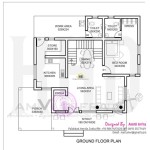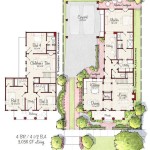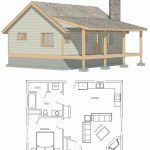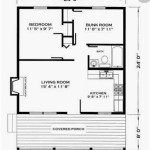Historic Colonial Home Floor Plans: A Glimpse into the Past
Historic Colonial home floor plans offer a fascinating window into the lives and lifestyles of early American settlers. These plans, developed and refined over generations, reflect the practical needs, social hierarchies, and aesthetic sensibilities of the period. Understanding these architectural layouts provides valuable insight into the cultural and societal norms that shaped the nascent United States. The term "Colonial" itself encompasses a broad range of styles, influenced by the architectural traditions of various European powers, primarily Britain, but also to a lesser extent, France, Spain, and the Netherlands. This article will delve into the key characteristics of these floor plans, highlighting regional variations and exploring the evolution of design across different periods within the Colonial era.
Colonial architecture in America spans roughly from the early 17th century to the late 18th century, with regional expressions evolving distinct characteristics. Early examples, often built in the New England colonies, were heavily influenced by English building traditions. As settlements spread southward and westward, architectural styles adapted to different climates and available resources. Examining floor plans therefore requires considering not only the style of the home but also its geographical location and the time period in which it was constructed.
Key Architectural Features of Colonial Floor Plans
Several features are consistently observed in Colonial home floor plans, providing clues to their design principles and functional requirements. Symmetry, practicality, and a clear separation of public and private spaces are hallmarks of many Colonial homes. The placement and size of rooms, the location of staircases, and the relationship between indoor and outdoor spaces all contribute to the overall character of these homes.
A defining characteristic is the emphasis on symmetry. This symmetry is often reflected in the exterior facade and carried through into the interior layout. The central hallway, a common feature in many Colonial floor plans, exemplifies this symmetry, dividing the house into two equal halves. Rooms on either side of the hallway are often mirror images of each other, creating a balanced and harmonious feel. This symmetrical arrangement was not solely aesthetic; it also contributed to the structural stability of the building.
The functional aspect of Colonial floor plans is also noteworthy. Homes were designed with practicality in mind, prioritizing efficiency and ease of use. Rooms were often multipurpose, adapting to changing needs throughout the day. The kitchen, typically located at the rear of the house, served as the heart of domestic activity, while front rooms were reserved for receiving guests and conducting business. The placement of fireplaces, essential for heating and cooking, played a crucial role in determining the layout of rooms.
A clear separation of public and private spaces was another important consideration. The front of the house, with its formal parlor and receiving rooms, was intended for public interaction. The rear of the house, containing the kitchen, bedrooms, and service areas, was reserved for private family life. This separation reflected the social conventions of the time, emphasizing the importance of maintaining a proper public image while safeguarding the privacy of the family.
Regional Variations in Colonial Floor Plans
While certain features are common across Colonial homes, significant regional variations can be observed in their floor plans. These variations reflect differences in climate, available building materials, and cultural influences. New England, the Mid-Atlantic, and the Southern colonies each developed distinct architectural styles, which are reflected in the layouts of their homes.
In New England, the saltbox and Cape Cod styles were particularly prevalent. These homes were typically characterized by their simple, rectangular floor plans, often with a central chimney and a large keeping room, designed to retain heat during harsh winters. The Cape Cod, with its low roofline and small windows, was specifically adapted to withstand the cold and snowy climate. The saltbox, with its long, sloping roof at the rear, provided additional space for storage and sleeping quarters. These floor plans emphasized practicality and efficiency, reflecting the resourcefulness of early New England settlers.
The Mid-Atlantic colonies, including Pennsylvania, New York, and New Jersey, saw a blend of architectural influences, including Dutch, German, and English styles. Floor plans in this region often featured larger rooms, higher ceilings, and more elaborate detailing than their New England counterparts. The Dutch Colonial, with its distinctive gambrel roof, often included a "stoep" or covered porch, providing a transitional space between the indoors and outdoors. German Colonial homes were known for their sturdy construction and efficient use of space, often incorporating features such as walk-in fireplaces and built-in storage.
In the Southern colonies, the plantation house became a dominant architectural form. These homes were typically larger and more elaborate than those found in other regions, reflecting the wealth and status of their owners. Floor plans often featured a central hallway, flanked by symmetrically arranged rooms, with a grand staircase leading to the upper floors. Wide verandas or porches were common, providing shade and ventilation in the hot, humid climate. The layout of plantation houses also reflected the social hierarchy of the time, with separate quarters for enslaved people and service areas located away from the main living spaces.
Evolution of Colonial Floor Plans Over Time
Colonial floor plans did not remain static throughout the Colonial era. As the colonies prospered and evolved, architectural styles changed, and floor plans adapted to meet new needs and preferences. The Georgian style, which emerged in the 18th century, brought a greater emphasis on formality and symmetry, influencing the layout of homes across the colonies. Later, the Federal style introduced more delicate detailing and a greater emphasis on natural light, further transforming the interior spaces of Colonial homes.
The Georgian style, named after the British monarchs of the 18th century, was characterized by its balanced proportions, symmetrical facades, and classical detailing. Georgian floor plans typically featured a central hallway, flanked by symmetrically arranged rooms, with a formal parlor and dining room at the front of the house. The use of finer materials, such as hardwood floors and detailed moldings, became more common. The layout of rooms often reflected the social conventions of the time, with separate spaces for entertaining, dining, and conducting business.
The Federal style, which emerged after the American Revolution, represented a departure from the more formal Georgian style. Federal floor plans often featured more open and flowing spaces, with a greater emphasis on natural light. Oval or elliptical rooms became popular, and the use of delicate detailing, such as fanlights and decorative moldings, increased. The layout of homes was often designed to showcase the wealth and taste of their owners, with grand staircases and elegant furnishings.
In conclusion, historic Colonial home floor plans offer a valuable glimpse into the past, providing insights into the lives, lifestyles, and architectural preferences of early American settlers. By understanding the key features, regional variations, and evolving styles of these floor plans, we can gain a deeper appreciation for the rich history and cultural heritage of the Colonial era.

1928 Home Builders Catalog The Dennard Colonial House Plans Vintage Floor

1920 National Plan Service Colonial House Plans Vintage Blueprints

Homes Of Brick And Stucco Standard Company Free Borrow Streaming Internet Archive In 2024 Colonial House Plans Blueprints

1916 Single Story Modern Colonial Ladies Home Journal Walter Swindell Davis House Plans Sims How To Plan

Colonial Early New England Homes

Saltbox Colonial House Floor Plans Historic American Homes Brand

Vintage House Plans 2185 Southern Colonial

Architectural Home Plans Prestwould Virginia Plantation Mansion W Co Historic American Homes

Colonial House Plans Blueprints

Home Builders Catalog 1926 The Arstine Colonial House Plans Vintage








